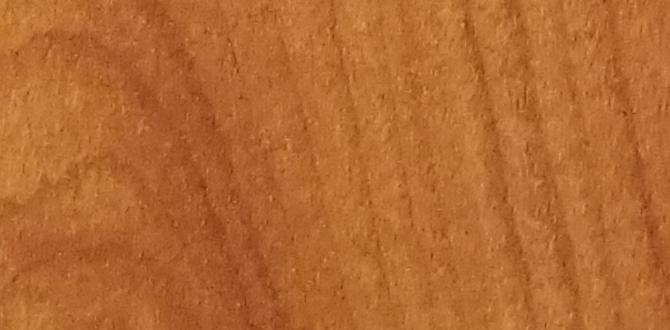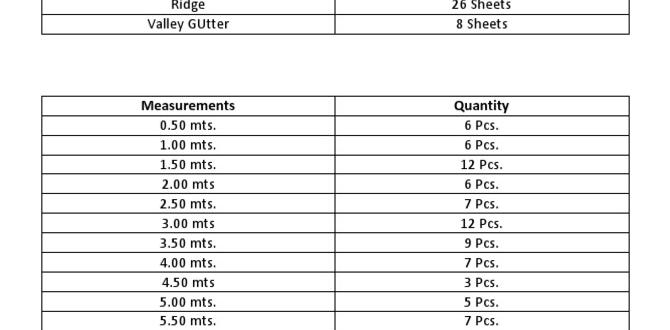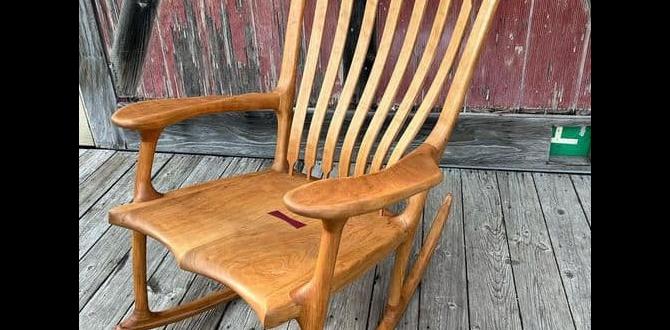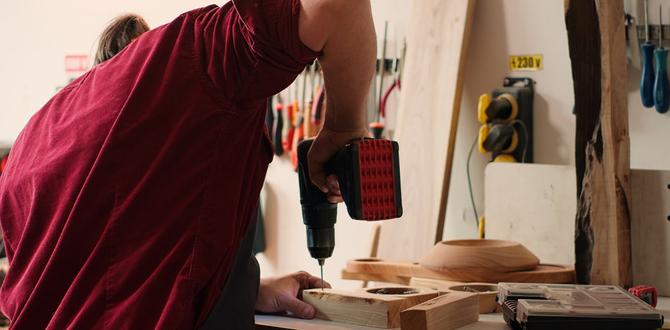Have you ever wondered if wood can conduct electricity? Many people think it can, but that isn’t entirely true. Imagine touching a wooden table during a storm. Would you feel a shock? This question leads us to explore the truth behind wood and conductivity.
In this article, we will debunk the myth about wood as a conductor. You might be surprised to learn that, unlike metals, wood does not easily allow electricity to flow through it. But why does this matter? Understanding how and why wood behaves this way can help us in many fields, from building homes to crafting furniture.
Did you know that some types of wood can even be used as insulators? That means they can help keep electricity safely contained. So, as you read on, prepare to discover the facts that reveal the real relationship between wood and conductivity.
Table of Contents
Is Wood Conductive? Debunking The Myth And Unveiling The Truth

Is Wood Conductive? Debunking the Myth and Unveiling the Truth
Many wonder, “Can wood conduct electricity?” The truth might surprise you. Wood is generally considered an insulator, not a conductor. This means it doesn’t easily allow electricity to pass through. However, moisture and certain types of wood can change things. For example, wet wood can conduct more electricity than dry wood. When you touch a wooden surface during a storm, could it give you a shock? Understanding wood’s conductivity is vital for safety. Stay curious!Understanding Electrical Conductivity
Definition of electrical conductivity. Importance of understanding materials’ conductivity.Electrical conductivity tells us how well a material can carry electricity. It helps us understand which materials are good for wires or electronics. Some materials, like metals, are great conductors. Others, like wood, are not. Knowing the conductivity of materials is key for safety and efficiency in our daily lives.
What is the importance of understanding electrical conductivity?
Understanding electrical conductivity is important because:
- Safety: It helps prevent fires or accidents.
- Efficiency: It improves energy use in devices.
- Choosing Materials: It helps in picking the right materials for projects.
The Composition of Wood
Cellular structure of wood. Water content and its role in conductivity.Wood is made up of tiny building blocks called cells. These cells help make wood strong. The mixture of these cells and other materials gives wood its special properties. The water inside wood is also very important. Water affects how well wood can conduct electricity. With less water, wood does not conduct well. But with more water, it can conduct better. Understanding this helps us know how wood works.
How Does Water Affect Wood’s Conductivity?
More water in wood means better conductivity. Wood can act like a conductor if it’s moist, but dry wood does not conduct electricity well.
- Cells make up the structure of wood.
- Water content plays a key role in conductivity.
Conductivity in Natural Materials
Comparison of wood with metals and other materials. Electrical conductivity of common natural materials.Many people think all materials act the same with electricity. But that’s not true! Metals, like copper and aluminum, carry electricity well. Wood and other natural materials, however, do not. Here’s a quick comparison:
- Metals: Great conductors of electricity.
- Wood: Poor conductor; it keeps electricity out.
- Stone: Also a bad conductor, like wood.
- Cotton: Similar to wood in terms of conductivity.
So, while wood is a common tool for many things, it doesn’t conduct electricity well at all!
What materials conduct electricity?
Metals conduct electricity well. Wood, stone, and rubber do not. It’s important to know what materials to use in different situations!
Scientific Studies on Wood Conductivity
Key findings from research on wood’s electrical properties. Case studies illustrating the conductivity of different wood types.Researchers have studied wood’s electrical properties in surprising ways. Here are some key findings:
- Wood has low conductivity, making it an insulator.
- Different types of wood show varied conductivity results.
- Environmental conditions affect how wood conducts electricity.
In one case study, pine and oak were tested. Pine showed slightly better conductivity than oak. However, both remained poor conductors. This points out that wood is not a good material for electrical use.
How Does Wood’s Conductivity Compare?
Wood’s conductivity is low compared to metals. Most wood types act more like insulators than conductors, which is useful for safety.
Factors Affecting Wood’s Conductivity
Moisture content and environmental conditions. Treatment processes and their impact on conductivity.Surprisingly, wood isn’t as straightforward as it seems! Its conductivity can change due to several factors. First, moisture content is key. Wet wood can conduct electricity better than dry wood. Think of it like a sponge, soaking up energy! Also, environmental conditions play a role. High humidity can enhance conductivity, while dry air can hinder it. Treating wood can change its properties too. Some treatments boost conductivity, while others might lower it. It’s like giving wood a makeover, and some styles just don’t match!
| Factor | Effect on Conductivity |
|---|---|
| Moisture Content | Increases with wet wood |
| Environmental Conditions | Higher humidity raises conductivity |
| Treatment Processes | Can either increase or decrease conductivity |
Common Myths About Wood and Electricity
Debunking the myth that all wood is a perfect insulator. Misconceptions due to wood’s variable properties.Many people think all wood is a perfect insulator against electricity. This isn’t true. The truth is, wood can conduct some electricity. Its ability depends on factors like moisture and type. Dry wood has low conductivity, but wet wood can carry electricity better. This confuses many into believing wood is always safe. Remember, not all woods are the same!
- Wet wood conducts electricity better than dry wood.
- Different types of wood have different properties.
- Not all wood is equally insulating.
What are common misconceptions about wood and electricity?
Many people believe wood is a complete insulator. It can conduct some electricity, especially when wet. This can lead to dangerous situations.
Practical Implications of Wood Conductivity
Applications of wood in electrical settings. Safety considerations when using wood with electrical components.Wood can actually be a surprising friend in electrical settings! It doesn’t conduct electricity well, making it a safe option for many applications. For example, wood is often used in the handles of tools and electrical gear where safety is key. Always check if wood is treated, though, as some treatments can change its properties. Just remember, it’s like a superhero—great for helping, but still needs a sidekick, like insulation!
| Application | Safety Tip |
|---|---|
| Tool Handles | Ensure tools are dry and clean |
| Insulation Stands | Use untreated wood |
| Furniture for Electronics | Avoid water exposure |
Conclusion
In conclusion, wood is not a good conductor of electricity. It can resist electric flow, making it safer to use in many situations. However, wet wood can be conductive. So, remember to keep wood dry when using it around electricity. For more fun facts and safety tips, we encourage you to explore further and learn about materials around you!FAQs
What Are The Primary Factors That Determine The Electrical Conductivity Of Wood?The electrical conductivity of wood depends mainly on three things: moisture, temperature, and type of wood. When wood has more water, it can carry electricity better. Warmer wood also conducts electricity well. Finally, some types of wood naturally allow electricity to flow more than others.
How Does Moisture Content In Wood Affect Its Conductivity Properties?Moisture content in wood changes how well it conducts electricity. When wood is wet, it conducts electricity better because water helps carry the electric current. Dry wood, on the other hand, does not conduct electricity well. So, the more moisture there is in the wood, the better it can conduct electricity!
Are There Specific Types Of Wood That Exhibit Higher Conductivity Compared To Others?Yes, some types of wood conduct electricity better than others. For example, woods like birch and maple have higher conductivity. This means they can carry electricity more easily. So, if you need to use wood for something electrical, these types might be a good choice!
In What Ways Does The Misconception About Wood’S Conductivity Impact Its Use In Electrical Applications?Many people think wood is a good conductor of electricity, but it’s not. This misunderstanding can lead to using wood in places where it’s dangerous, like near wires. If you think wood can safely hold wires, it might break or catch fire. So, it’s important to know wood isn’t safe for electric work. We need to use proper materials to keep everyone safe.
How Does The Structure And Composition Of Wood Influence Its Ability To Conduct Heat?Wood is made up of tiny fibers and air spaces. This structure makes it not very good at conducting heat. The air trapped inside acts like a blanket, keeping heat from moving easily. Because of this, wood feels cooler or warmer depending on the weather, but it doesn’t get hot quickly like metal does.





